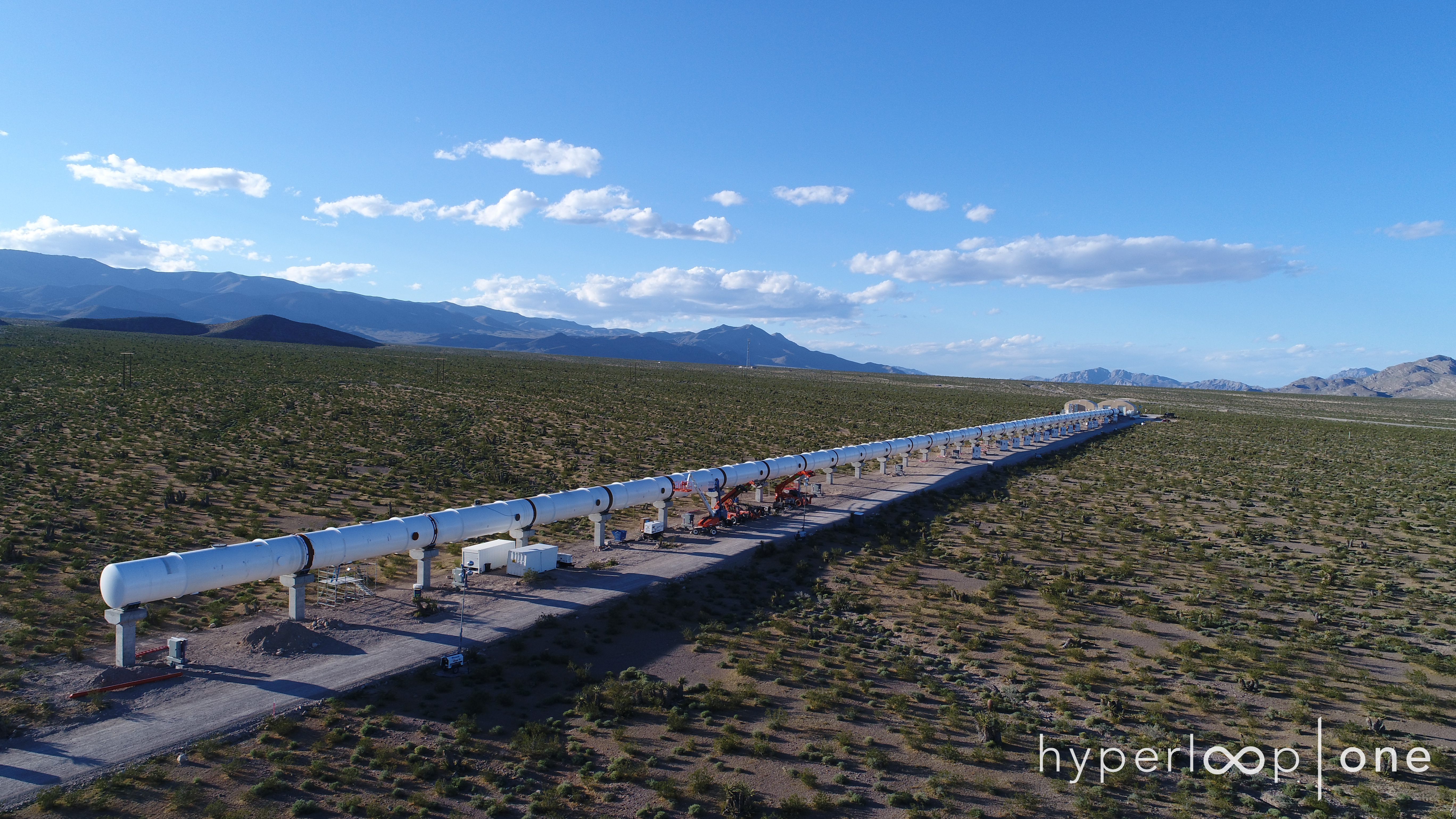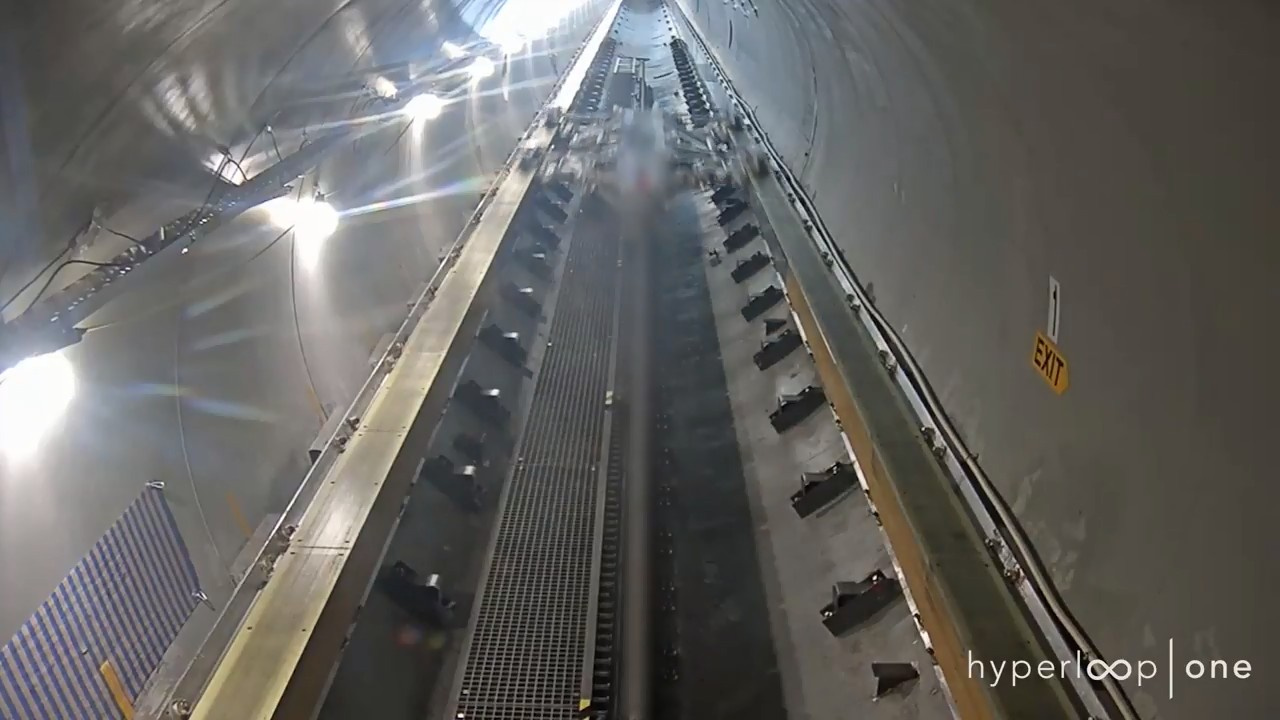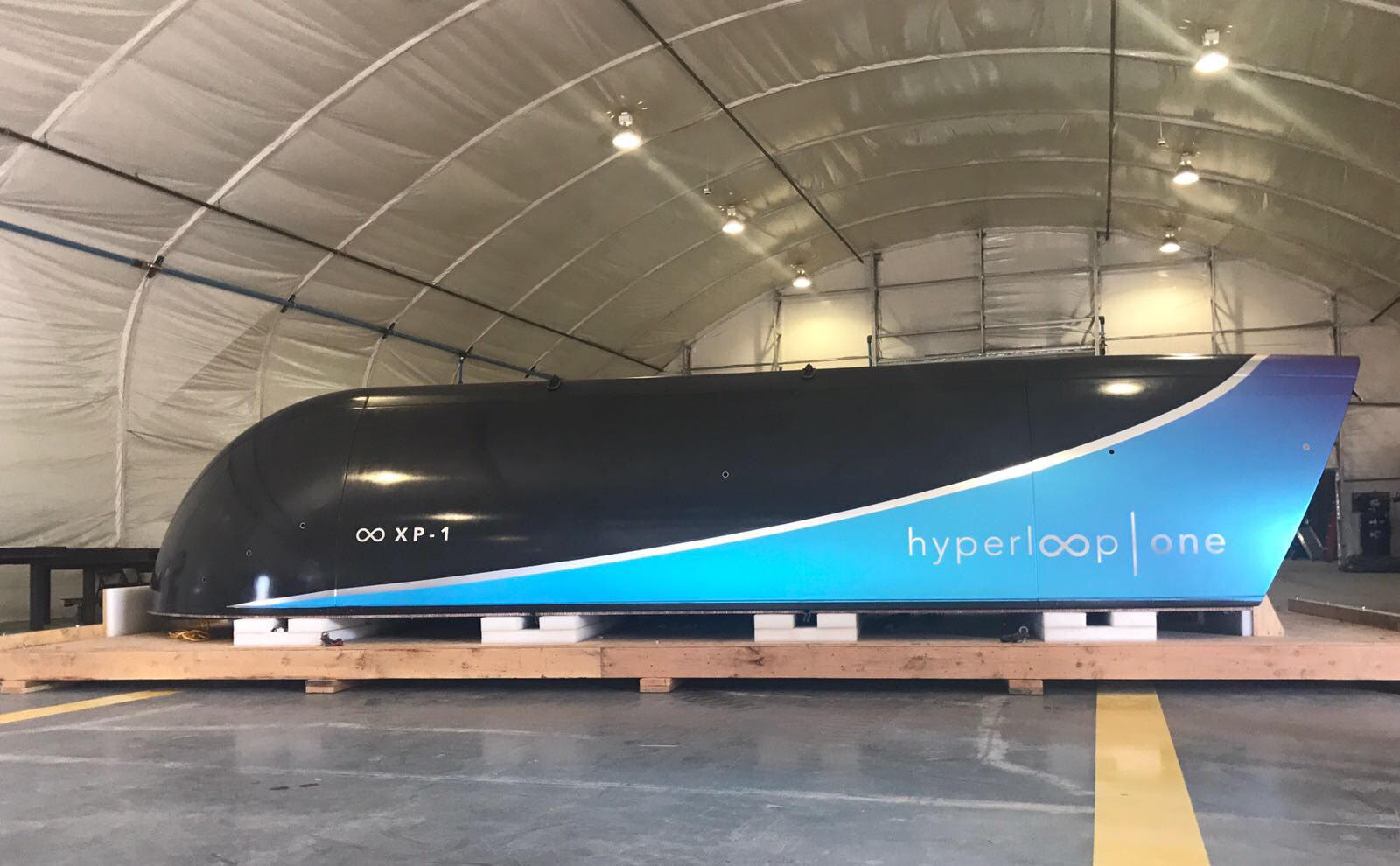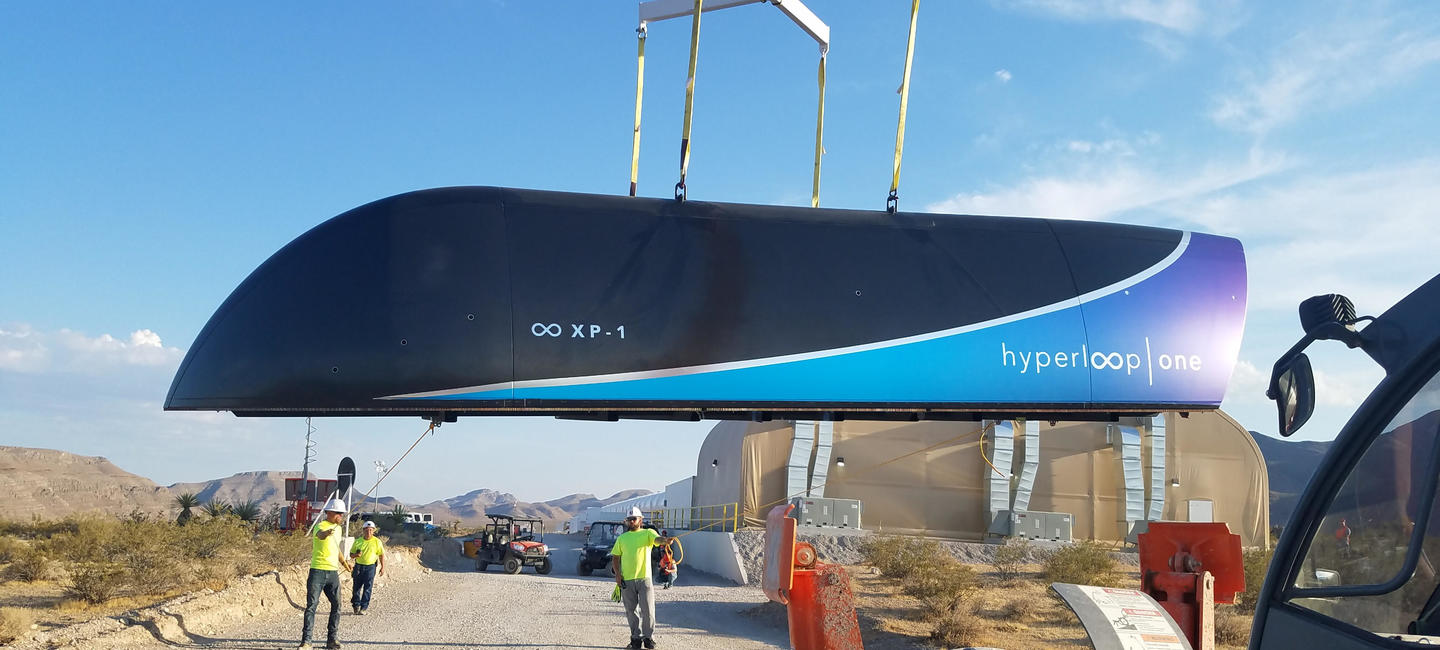Hyperloop One for the first time broke up a levitating chassis in a technical vacuum

Hyperloop One's DevLoop Test Tunnel in Nevada
On May 12, 2017, Hyperloop One tested the chassis for the XP-1 transport capsule in a DevLoop tunnel in Nevada. For the first time, engineers managed to achieve controlled movement and levitation of a vehicle in a vacuum . The idea of Ilona Mask is embodied in reality.
Hyperloop One considers this a historic event. In its value, it can be compared with the first flight of the Wright brothers over the dunes of North Carolina on a cold morning in December 1903. More than a century ago, they showed that people can be transported by air on airplanes with an engine (it was a Flyer-1 with a wooden propeller). Now, without this transport, it is difficult to imagine human civilization. Maybe Hyperloop vacuum tunnels will play the same revolutionary role.
Only five people saw the first flights of the Flyer, and the Wright brothers did not tell anyone about the tests. Only a few years later the public was able to see a real airplane with its own eyes. Unlike American pilots, Hyperloop One does not hide anything - it published a video two months after the test.
The video shows the Hyperloop One control center. Engineers check all systems before starting the chassis. Finally, it starts.

A camera mounted on a vehicle captures the moment it comes off the rails and levitates on a magnetic cushion.

Hyperloop One completed construction of a test section of the DevLoop transport system in the desert near Las Vegas in April 2017. The length of the test tunnel with a diameter of 3.3 m is 500 m. Now engineers are preparing for a full-fledged testing of wagons - transport capsules, inside which are places for passengers.
Of the 500 m tunnel, about 305 m are equipped with a linear electric motor with a wound winding, which creates a magnetic field. In the interaction of a moving secondary element with a permanent magnet with a stator - a series of induction coils - linear movement of the moving part of the engine, magnetic levitation (maglev) is ensured.
The air in the tunnel is rarefied to about the same level as at an altitude of 61 km above sea level. The pressure is much lower than atmospheric, so that such an environment can be called a technical vacuum.
Air pumping out of the tunnel began at around 20:00. By 23:45, the pressure had dropped to 100 Pa. First, the engineering team held several preliminary races, rolling the chassis a few meters back and forth. At 23:51 they gave the go-ahead to the start of the test.
By the time of launch, the pressure had dropped to about 5 Pa, so that the Hyperloop One tunnel had become the fourth largest vacuum chamber in the world, and the largest among those owned by private companies.
The thin atmosphere and the linear electric motor at 305 meters allow the capsule to accelerate to a maximum speed of 400 km / h, but the duration of the first test was 5.3 seconds and only 30 meters of the linear electric motor were involved, so the chassis accelerated only to 112 km / h with an acceleration of 2G . The tests were considered successful. Recall that introducing the concept of Hyperloop in 2013, Ilon Musk talked about the speed of movement of capsules at 1200 km / h.
After successful testing of the undercarriage, the next stage is to be launched in the tunnel of a real car, an 8.5-meter XP-1 capsule, which has already been manufactured and is being prepared for tests.

XP-1 capsule
The XP-1 case is made of carbon fiber with an aluminum protective cover that attaches on top of the chassis.

Tests of the transport capsule are scheduled for the coming months. Perhaps they will be held in July and August.
Hyperloop One has big plans. The company attracted more than $ 92.6 million of investments, and among investors Oerlikon Leybold Vacuum (one of the shareholders is Viktor Vekselberg), as well as the Russian venture fund Caspian VC Partners (represents the interests of Ziyavudin Magomedov). In particular, from September 2016, Caspian VC Partners presented a plan for the construction of a Hyperloop branch about 65 km long along the route Hunchun (China) - the port of Zarubino. The average speed of movement should be about 740 km / h, the investment is estimated at 30-40 billion rubles, the implementation period is 5 years.
In the long run, you can imagine a direct transport corridor “The Silk Road” , which will allow to deliver goods from China to Europe in 10-12 hours.

In addition to Russia, Hyperloop One is negotiating the construction of transport tunnels in the UAE, Finland, Sweden, the Netherlands, Switzerland, the United Kingdom and more than ten US regions.
But competitors are not inactive. Among them are Hyperloop Transportation Technologies (plans to build tunnels in Slovakia and South Korea), as well as the company Arrivo, which was founded by the former chief engineer of Hyperloop One Brogan Bam Brogan (Brogan BamBrogan, this is his real name).
All Articles